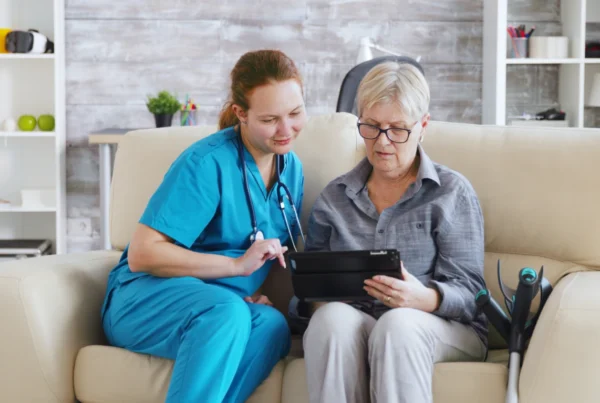
Providing optimal support for patients during their end-of-life journey is crucial in hospice care. One critical aspect that ensures quality care delivery is the efficient management of durable medical equipment (DME) and home medical equipment (HME) rentals. Finding the right software solution is essential for hospice providers.
Investing in a comprehensive HME/DME software tailored for medical rentals revolutionizes the way hospice providers handle equipment management. By automating tasks, simplifying workflows, and offering robust features, such software empowers hospice organizations to focus on what truly matters – delivering compassionate care to patients and their families.
In this blog post, we will delve into the key features hospice providers should look for when selecting an HME/DME software for rentals. From advanced inventory management to streamlined billing processes, these features make a substantial difference in enhancing the efficiency, accuracy, and overall performance of hospice operations.
Read on to explore the vital features that help hospice providers navigate the complex landscape of equipment rentals, enabling them to provide dignified and comfortable end-of-life care to their patients while optimizing their internal processes.
Key Features for a HME/DME Software:
- User-Friendly Interface: A hospice-specific software solution should offer an intuitive and easy-to-navigate interface. This ensures that both administrative staff and caregivers quickly adapt to the software, reducing the learning curve and boosting productivity.
- Equipment Tracking & Inventory Management: The software should provide comprehensive tracking capabilities, allowing hospice providers to monitor and manage their DME/HME inventory efficiently. Real-time visibility into equipment availability, location, and maintenance schedules helps optimize equipment utilization and prevent unnecessary delays or shortages.
- Work Order Management: Automated custom forms, workflows, and scheduling should be included in any HME/DME rental software. By automating these tasks, organizations reduce manual labor and errors while ensuring that all relevant data in the system is accurate. The free more time to focus on patient care.
- Smart Delivery/Pickup Scheduling & Logistics: Delivery route optimization using real-time and historical traffic data to get your drivers to their destinations more quickly and conveniently should be part of the system. This reduces wasting precious resources like time and money on poor navigation and costly mistakes.
- Vendor Management: Working with various vendors, each with their own set of methods, is a challenge. That’s why your HME/DME software should offer a unified overview for vendor management, including PO integrations, vendor performance metrics, part number mapping, and more.
- Automated Documentation: An ideal software solution should automate documentation tasks, such as generating equipment delivery records, tracking usage logs, custom forms and checklists, and producing comprehensive reports. By streamlining paperwork, hospice providers save valuable time and ensure accurate records for compliance and auditing purposes.
- Meets Compliance Standards: Operating up to the standards of key organizations such as OSHA, The Joint Commission, and HIPPA is crucial to your healthcare system to provide quality patient care. The software should offer compliancy for these along with approval and notification workflows to ensure equipment meets these standards through every stage of operations from purchase order to delivery/pickup.
- External Systems Integrations: Seamless integration with other tools in your organization’s tech stack is crucial for fostering interoperability. The software should facilitate the exchange of information, ensuring a seamless flow of data between departments and reducing the risk of errors or information gaps.
- Billing &Claims Management: Efficient billing processes are essential to minimize revenue leakage and maximize reimbursement. Look for software that automates cycle billing, verifies insurance eligibility, and generates accurate claims, reducing the administrative burden on hospice staff.
- Customizable Reporting Dashboards & Analytics: The ability to generate custom reports tailored to the specific needs of hospice providers significantly enhance data analysis and decision-making. The software should offer flexible reporting features, enabling detailed insights into rental utilization, costs, and trends.
Implementing a HME/DME software designed specifically for hospice rentals improves the way hospice providers manage equipment, streamline workflows, and ultimately enhance patient care. By seeking key features such as the ones listed above, hospice organizations ensure a smooth and efficient rental process while focusing on what matters most – providing compassionate care to patients and families.
Want to learn more about what Wynne can do for your healthcare organization? Speak with one of our experts today.




